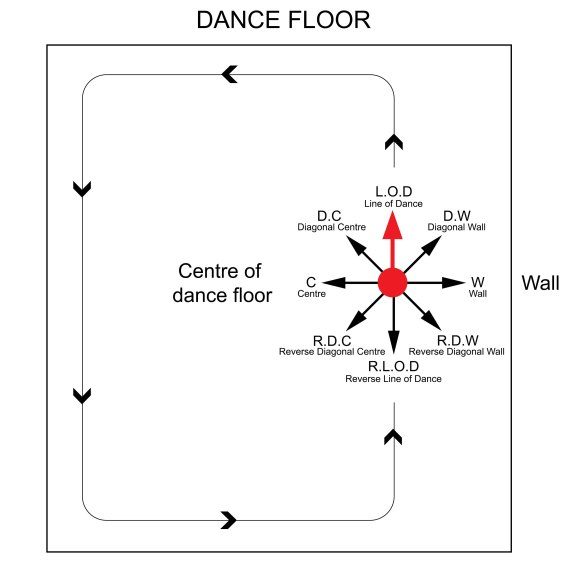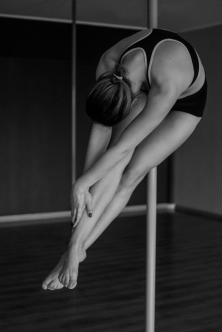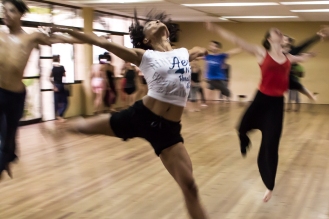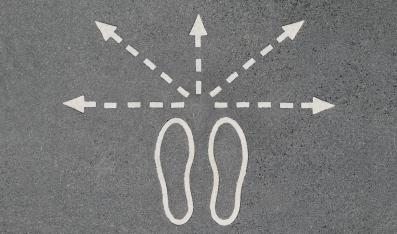So, you’ve been dancing for a while now and are thinking about investing in your first pair of dance shoes. Awesome! But where do you start? I’ve heard many horror stories about people buying shoes that don’t fit, are the wrong type etc. Hopefully this article will help you in choosing the perfect pair first time around.
Why do I need proper dance shoes?
Dance shoes have been developed over the years by professionals to give you the best possible performance while you dance. As a beginner you can start out in street shoes but as you progress you will need to upgrade to dance shoes. Here’s why:
Dance shoes have a suede or leather sole to stop you from slipping on the floor, while still giving you freedom of movement. Rubber soles stick to the ground while plastic soles have no grip and slide all over the place. Both of these can lead to injuries on the dance floor. Dance shoes are made to support your ankles, have metal supports built into the heel and are flexible enough for all different types of movement.
That sounds great! What do I look for?
Ladies, it is usually a good idea to start in Latin shoes, this is because they are versatile and you can use them in both Latin and Ballroom dancing. Ballroom shoes are suited only to Ballroom dances. Shoes come in an array of colours and can be dazzled up if you wish. Heels on a Latin shoe are situated more towards the back of the shoe which pushes you onto your toes, a must in Latin dancing. You get various heel heights and heel broadnesses, ranging from an inch high broad heel to a 3 inch high stiletto heel, in any combination you can think of. If you are comfortable in heels and want the added height then a taller heel is right for you. If you are not so comfortable with heels than a shorter broader heel may be the way to go.
Gents, it’s advisable to start in Ballroom shoes, they have a lower, broader heel (Cuban heel) and are easier to get use to than the higher heeled Latin shoe. Ballroom shoes have a thinner suede or leather sole, this allows you to easily glide across the floor. Ballroom shoes are flexible but hug your feet, making them an extension of your body. Men’s shoes generally come in one colour, black. Or there is the option of a slightly more vintage look with two tone shoes in black and white. Gents shoes are lace ups, so there is no stress about straps, speaking of which;
Straps! Straps everywhere!
Ladies, here comes the second decision when buying shoes, the type of straps. There’s the ankle strap which is the most common strap and is the least supportive of the straps. If you are nervous about your ankles then this strap isn’t for you. The T-strap has a strap from the toe to the ankle, this secures the shoe to your foot more firmly and takes some of the pressure off your ankles. The X-strap has either an ankle strap or an arch strap. If you are prone to rolling your ankles then the X-strap with the arch strap is best as it gives you more support than the others. They are all designed to keep your heel in place and stop your foot from sliding around inside the shoe.

What size should I get?
For both Ladies and Gents it is best to get a pair of shoes half a size too small for you. Don’t worry there is logic behind this. As you dance your shoes will stretch. If you start at your normal size or a size bigger than your foot then within a month or two the shoe will become loose on your foot which can lead to blisters and injuries. So if you are a size 5, you want to get a 4.5 or if you are a 10 then a 9.5 etc.
Ladies, for your first practice or two in your new shoes you may want to wear a thin pair of socks or bring other shoes with you. It takes awhile to break new shoes in. Pack some plasters just in case of blisters.
I have my shoes! How do I care for them?
Rule number one, never wear your shoes outside. The soles are delicate and can get damaged or destroyed when used on tar, gravel, grass etc. Invest in a shoe bag to carry them around, the best is a net bag for ventilation.
If you have leather shoes then a weekly shining should be done with a proper polish to keep the leather soft and supple and to remove dirt and scratch marks. For satin shoes wipe them down with a soft dry cloth. If you have a stain on them, wet a cloth and blot it on the stain following the grain of the material. Dry your shoes immediately after. Don’t rub them dry as that could leave water streaks but dab the damp areas with a dry cloth.
Use a wire brush to keep suede soles from becoming hard or shiny. Run the wire brush against the suede making it stand up or bristle. This will get rid of residue from the dance floor and dust. Keep the wire brush away from the rest of the shoe as it can damage the leather or satin material.
Any last bits of advice?
Yes! Ladies, if you are going to compete or want to look taller on the dance floor then invest in a skin coloured or beige pair of shoes. This creates the idea that your shoe is part of your leg and gives you a longer, taller look and a cleaner line. A dark or colourful pair of shoes can make you look shorter as it ‘cuts off’ your line at the ankle. The shoe is more visible and pulls focus to it.
If your shoes have long straps that sticks out while you dance you need to cut them down. There’s nothing like a strap flapping around to distract you. Put your shoes on and make sure they are strapped correctly before cutting. You don’t want to cut off too much by mistake. They need to be long enough for you to be able to put them on, but short enough to lie against your shoe. I suggest cutting about two inches down from where you fasten them as a safety measure.
New shoes can be uncomfortable or strange at first, but after awhile you’ll notice how they can revolutionise your dancing and become an extension of your body.
Enjoy your new shoes, it’s time to get them dancing!
Lauren
LAUREN KRUGER IS THE CREATOR AND AUTHOR OF DANCE101. SHE IS A QUALIFIED DANCE INSTRUCTOR AND CURRENT S.A NATIONAL SILVER BALLROOM CHAMPION. SHE TEACHES AT FIVE6SEVEN8 DANCE STUDIO, WHICH YOU CAN CHECK OUT HERE:HTTP://WWW.FIVE6SEVEN8.CO.ZA/



 Many people believe that talent is an absolute must if you want to dance, if you have no talent then why even bother? Well let me let you in on a little secret, talent is created. It doesn’t just appear out of thin air to bless some and leave others destitute. Talent is your own creation and I have the formula to start growing it right here. Professional Public Speaker, Douglas Kruger talks about a ‘Talent Formula’ which goes as such:
Many people believe that talent is an absolute must if you want to dance, if you have no talent then why even bother? Well let me let you in on a little secret, talent is created. It doesn’t just appear out of thin air to bless some and leave others destitute. Talent is your own creation and I have the formula to start growing it right here. Professional Public Speaker, Douglas Kruger talks about a ‘Talent Formula’ which goes as such: So you’ve starting dancing and you are really getting into it, but have you wondered what dance is doing for you? You’ve probably had a few stiff muscles, but what other benefits are there to dance? This article looks at the benefits of dance both mentally and physically. All the more reason to grab those dance shoes and head for the studio.
So you’ve starting dancing and you are really getting into it, but have you wondered what dance is doing for you? You’ve probably had a few stiff muscles, but what other benefits are there to dance? This article looks at the benefits of dance both mentally and physically. All the more reason to grab those dance shoes and head for the studio. Ok, the big day has finally arrived. You have found a studio that suits your needs, booked your first lesson and are starting to get just a little excited. Now what? What should I wear? What should I bring? How does this work? Deep breaths, in this article we are looking at surviving (and loving) your first dance lesson.
Ok, the big day has finally arrived. You have found a studio that suits your needs, booked your first lesson and are starting to get just a little excited. Now what? What should I wear? What should I bring? How does this work? Deep breaths, in this article we are looking at surviving (and loving) your first dance lesson.